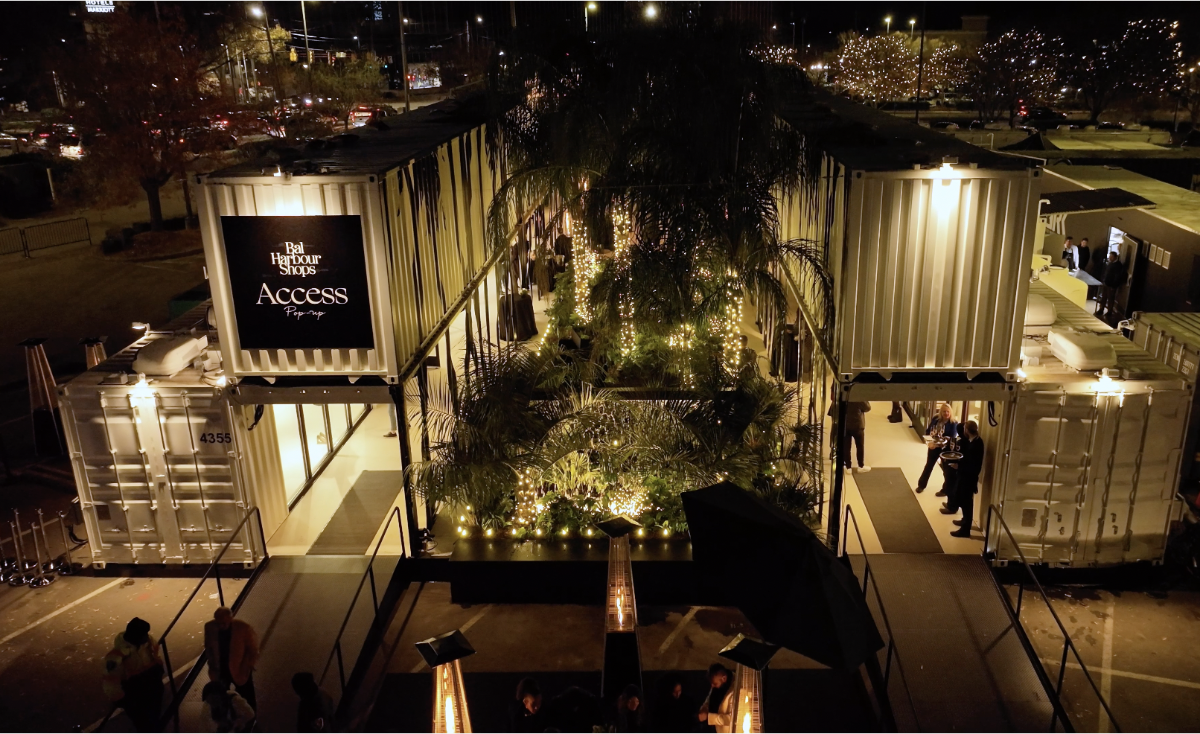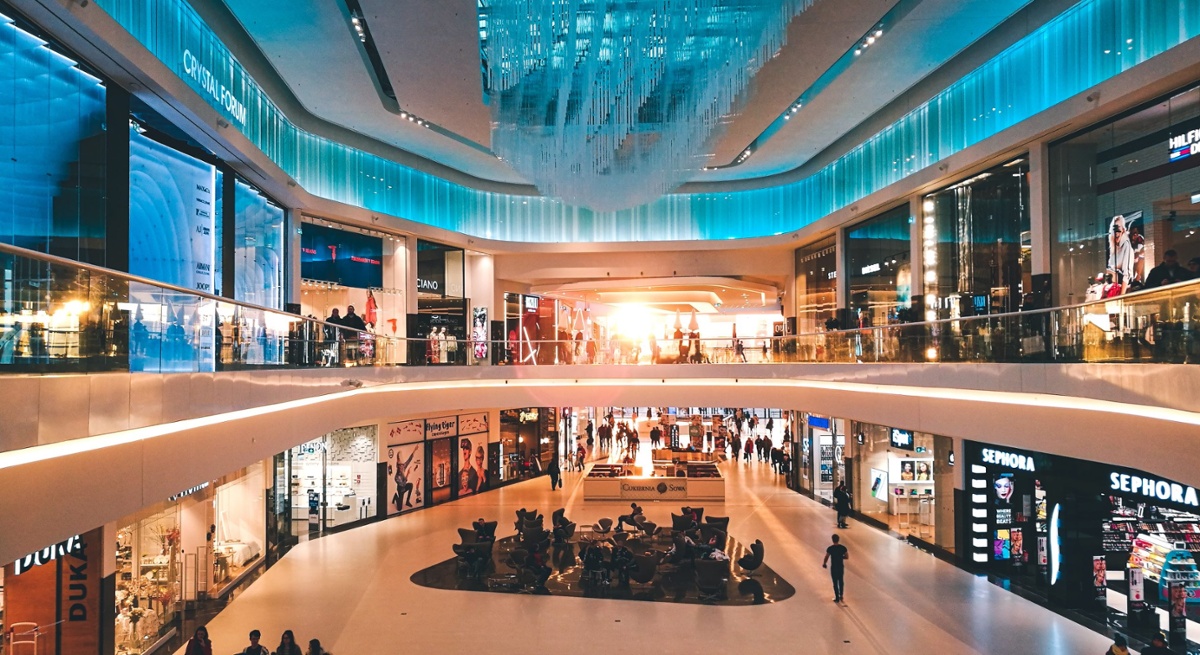From ‘Survive’ to Thrive – key trends making malls sensational
In recent years, consumer behaviors and preferences have undergone a dramatic transformation. So has the iconic shopping mall – a legacy of mid-century suburban sprawl as shopping centers took over the country’s real estate. According to data from McKinsey, online shopping is growing in nearly every category, which has forced physical brick and mortar retail hubs like shopping malls to evolve to remain relevant, incorporating advanced technology to bridge the gap between online and offline shopping realms.

Some malls are responding to the growing demand amongst consumers for highly specialized experiences by perfecting their brand as a mall. Far from being an assemblage of retailers, these malls are masterfully creating unforgettable moments for customers that are changing the very definition of the mall experience. The Bal Harbour Shops’ ACCESS Pop-Up, a traveling mall concept from the well-known luxe shopping mall, is one example. This traveling mall of 30 individual shipping containers join together to set up shop and recreate the iconic shopping experience at Bal Harbour, a Miami shopping destination that has represented the epitome of luxury shopping since its founding in 1965.

By thinking creatively about real estate, malls like Bal Harbour are modernizing their brand while also giving retailers the space to do the same, ultimately providing an unparalleled customer experience thanks to a refreshed retail concept.
Digital that contours around new concepts
The impact of digital signage extends beyond advertising: it creates a comprehensive and engaging environment that enhances customer engagement and satisfaction, and it provides a bridge between digitally native brands and the brick-and-mortar experience. The acceleration and integration of digital signage software solutions, which have the power to revolutionize the way malls immerse and engage consumers, offer dynamic and dramatic content that transforms space into new cultural centers while also providing more precise data-driven advertising vehicles.
Digitally native brands are looking for ways to create tactile experiences for their customers, like opening pop-up shops that allow customers to physically interact with products that they would typically only see online. Malls can provide a great experimental destination for brands that are looking to break into the brick-and-mortar space and provide a hands-on experience for shoppers. The Westfield Valley Fair mall in San Jose, California is doing this with what it’s calling its “digital district.” Digital-only brands can create physical environments that give their fans a chance to interact with them, and the mall gets potential long-term clients if the engagement is successful.
Pop-up shops leverage the flexibility of connected, interactive experiences to deliver curated product within smaller-footprint, brand-specific environments that can change as rapidly as consumer interests do. This innovation not only caters to the expanding demographics of luxury shoppers, who can increasingly be found in suburban and rural areas, but also introduces a fresh, exciting element to the mall shopping experience.
These temporary (sometimes leading to permanent) retail installations can offer unique, immersive experiences that blend the tactile pleasure of traditional shopping with the convenience and novelty of modern retail innovations. By making use of creative digital signage strategies brands can successfully create a cross-pollinating retail experience that seamlessly bridges the gap between online and in-store consumer experiences. A popular example would be displaying brand social media feeds on in-store kiosks or incorporating QR codes to interactive digital directories that help customers navigate the space in their hand while also promoting deals personalized to the user’s interests.
Pop-up shops also enable brands to experiment with new markets and consumer segments without the commitment of establishing a permanent retail presence. This flexibility, combined with the ability to offer a unique, personalized shopping experience (for example, limited-time “IRL”, or in real life, discounts for existing digital customers), makes pop-up shops an increasingly popular choice for both brands and consumers. Malls that accommodate these temporary installations not only attract consumers looking for exclusive shopping experiences but also position themselves as dynamic, adaptable spaces for brands.
A new wave of spatial environments
The physical design and layout of malls are undergoing a transformation to appeal to the modern audiences. Malls are moving away from predictable collections of stores to becoming experiential spaces that offer a blend of retail, entertainment, and social activities. This involves the integration of open, flexible spaces that can host events, interactive displays that engage customers in immersive experiences, and zones dedicated to co-working and socializing that reflect the lifestyle of the modern shopper. The aim is to create an environment where shopping is just one part of a broader, more engaging experience. This shift in design philosophy acknowledges the changing habits of consumers, who now seek spaces that offer more than just transactions but meaningful experiences that resonate with their digital-first lifestyle.
The deployment of large-scale, interactive screens within malls engage customers with immersive brand experiences in new and unique ways. Adidas, for example, has created interactive walls in flagship stores to allow customers to view and learn about products in a dynamic manner. This approach positively impacted consumer behaviors, leading to higher engagement rates and improved sales figures (recent surveys show that digital signage can boost sales volume by up to 31.8%).
Malls can also significantly enhance the visitor experience by using digital signage for more modern wayfinding experiences, providing an intuitive and efficient means for customers to navigate the often-complex layouts of modern shopping centers. Through interactive digital directories and overhead signs, customers can easily locate stores, amenities, and events within the mall. These digital signs can be updated in real-time to reflect new stores, temporary closures, or specific events, ensuring the information is always current. And, with the incorporation of touchscreens and QR codes, visitors can get personalized directions both visually, and as a link to their mobiles – to remove the friction get to their intended destination with clarity and ease.
These digital signage strategies are a large part of why malls continue to offer a compelling reason for consumers to visit in person, providing experiences that online shopping can’t replicate.
Where the future state is now
As pop-ups and flexible spaces become the new normal for malls, future trends may include the integration of augmented reality (AR) through digital signage tools, allowing shoppers to visualize a wider range of products that may not be in store, try on or experience products virtually, or navigate through virtual store layouts.
Sustainability is also becoming a priority, with digital signage playing a role in promoting eco-friendly practices and products to consumers. As an example, commercial property developers might utilize digital displays to showcase the sustainability efforts of their retail tenant, or to inform shoppers about recycling programs within the mall or other green programs and policies.
The mall’s role in shaping community identities and supporting commerce remains significant. Take Hudson Yards in New York City. The 28-acre development is more than just a place to shop and dine; it’s a cultural center and architectural triumph, providing an exceptional connection point for city dwellers and visitors alike. Within these new and innovative spaces, retailers and restaurants are wanting to create a dialogue with consumers (and between digital brands and the in-store experience) that is engaging, cohesive, and personalized. Digital signage is playing an active role in that. The destiny of the classic shopping mall hangs on its ability to fuse online and offline experiences, creating spaces that are not only about shopping but also about community, culture, and technological exploration. Far from becoming obsolete, malls have the potential to become nexus points of digital and physical retail innovation.
Share this
You May Also Like
These Related Stories

How digital signage is making malls thrive again

What's the Future of Interactive Experiences? (Part 2)


